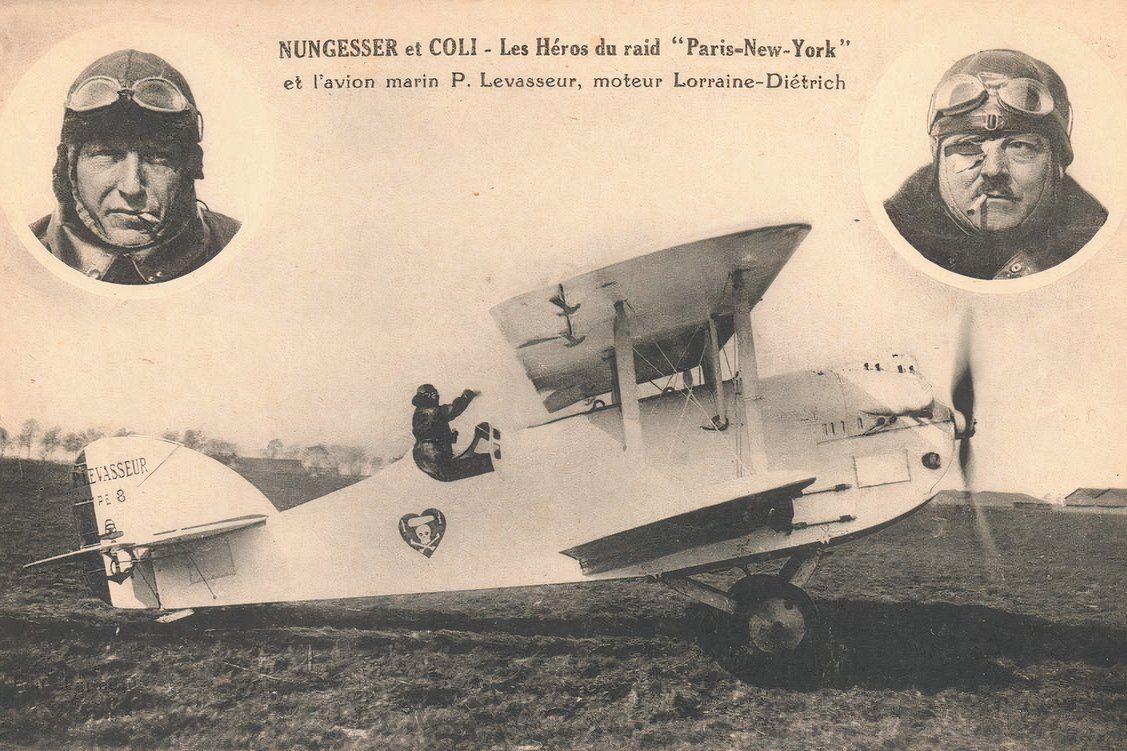Summary L'Oiseau Blanc disappeared attempting a transatlantic flight in 1927 destined to win the Orteig Prize. Many rumors surround the aircraft's fate, with speculation that it crashed in Maine or Newfoundland. Legacy of the disappearance includes films, museums, and ongoing search efforts to find remains in Newfoundland.
The disappearance of L'Oiseau Blanc remains one of the greatest mysteries in aviation. The French Levasseur PL.8 biplane disappeared in 1927 while attempting to make the first non-stop flight across the Atlantic between Paris and New York City.

It was destined to win the Orteig Prize. French World War I heroes were at the helm of the aircraft, Charles Nungesser and François Coli. At the time, Nungesser was the third-highest French ace with 43 compact victories during the First World War.
The Orteig Prize was established by New York City hotel owner Raymond Orteig, who encouraged aviators to fly non-stop between New York and Paris (or vice versa). Many famous aviators attempted the trip but were unsuccessful. Nungesser and Coli in L'Oiseau Blanc departed from mainland Europe, Paris, on May 8, 1927, and were last sighted over Ireland.
Less than two weeks later, their competitor, Charles Lindbergh, successfully completed the transatlantic journey and claimed the prize in his aircraft, the 'Spirit of St. Louis.' Many rumors have circulated over the last century about the fate of the aircraft and its crew, with many assuming that it encountered a squall over the Atlantic Ocean.
Investigations started in the 1980s also believed that the aircraft likely reached Newfoundland and may have crash-landed in the forest over Maine. A squall is a sudden, sharp increase in overall wind speed that can last several minutes compared to short wind gusts. Squalls are usually experienced with active weather, such as rain, thunderstorms, or snow.
The history continued in films and museums Nungesser and Coli's disappearance leaves an extensive legacy and has plagued investigators for decades. The disappearance has been referred to in many films, and memorabilia can be found in museums in the United States, Canada, and France. A street in Paris was even named after them, and a commemorative postage stamp was issued as a remembrance in 1967.
At Paris Le Bourget Airport , a statue honors the flight, and there is a memorial located near the Cliffs of Étretat, where the duo and their aircraft were last seen above France. Evidence suggests the fate of the L'Oiseau Blanc, of which the remains may lie in the forest-covered hills near Round Lake in Eastern Maine. A local fisherman, Anson Berry, was fishing from his canoe on Round Lake on the afternoon of May 9, 1927, when he heard what was believed to be an engine overhead, approaching from the northeast.
Unfortunately, due to heavy overcasting, Berry did not sight an aircraft and could not confirm whether it was the duo in L'Oiseau Blanc. Berry's recollection of the noise was that the engine sounded erratic. Moments after hearing it, it disappeared after what he described as a faint, ripping crash.
Given the cloudy skies and rain beginning to fall, Berry decided it was time to return home and didn't investigate the noise further. Love aviation history ? Discover more of our stories here 'L'Oiseau Blanc' meaning 'White Bird' Another presumption was that the aircraft was forced down due to the weight of ice that had built up on the wings of the bi-plane. 16 witnesses in the Canadian province Newfoundland (then British Dominion) saw or heard an aircraft pass over them on May 9, and given the times and location, which was similar to that of Berry in his canoe, makes it possible that both parties were witness to some of the final hours of L'Oiseau Blanc.
Witnesses in Newfoundland have even reported finding pieces of an aircraft that could've been L'Oiseau Blanc in Gull Pond near St. Mary's Bay. Those who saw an aircraft overhead have noted that they saw what they thought were flames above.
However, as the aircraft was liquid-cooled, steam may have been sighted. Executive Director of the International Group for Historic Aircraft Recovery, Ric Gillespie, has never given up the hunt for the remains of the infamous aircraft since he first heard about the mystery in 1980. CBC reported his comments : "The pond on the Cape Shore, it's a legend.
[There are] people's stories told years later — much fuzzier but worth checking out. There were no active aircraft in Newfoundland on May 9, 1927. If these people heard and saw an airplane, as they swore at the time they did, it was the White Bird.
" "In Newfoundland there are more than stories. There are witness reports. We shifted our search to Newfoundland in 1992 and started to find things.
This is the most important missing airplane in history." Gillespie has made multiple trips to Newfoundland since 1992, but he has been unlucky not to find any conclusive evidence that the aircraft crashed there. On one such trip, he and his search group found a steel cylinder painted blue, but its origin remains unknown.
Air crash investigation is a complex and lengthy process..



















